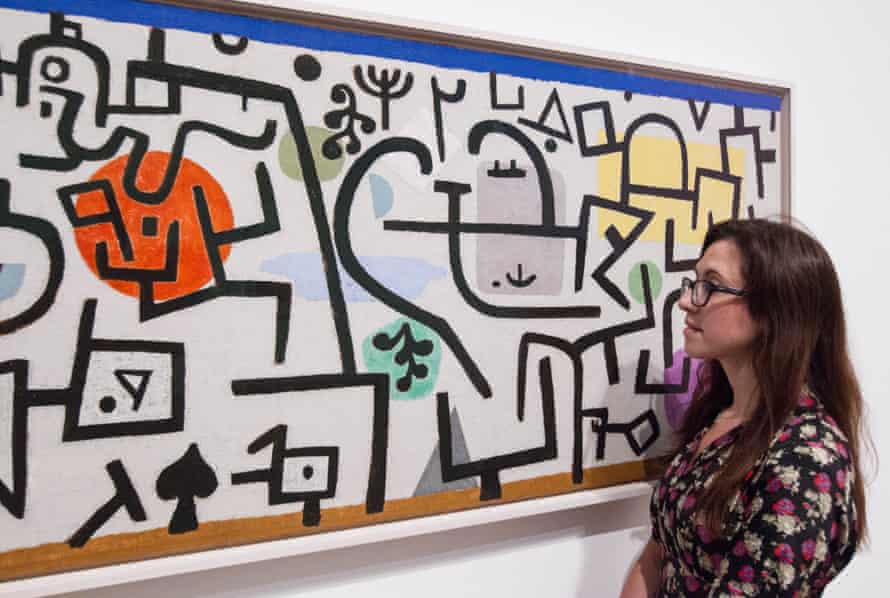 |
| Paul Klee at work in Weimar, 1924. Photograph: Felix Klee/Klee Nachlassverwaltung, Bern |
My hero / Paul Klee by Philip Hensher
Drawings by Cézanne and Klee among works gifted to Courtauld Gallery
I
There are so many emotions in his work. Sometimes it’s dreamlike or idyllic, sometimes full of anger and passion. I love its seeming simplicity, the way he manages to make the complicated clear and straightforward. And then there’s his mastery of colour.
Klee was born in Switzerland in 1879 and studied in Munich, where be became involved with a group of expressionists. Kandinsky was a good friend, and he was influenced by the cubist work of Picasso and Braque. But it was when he travelled to Tunisia in 1914 that everything changed. The paintings suddenly heat up. He starts using reds, oranges, greens, placing them alongside these intense north African blues. Some of the paintings he made in Egypt almost burn. And they get more and more abstract.
As he got older, life became harder. In 1933, the Nazis declared his work “degenerate” and he was forced to return to Switzerland. His colours disintegrate, like his health was disintegrating. The paintings become a lot more abrasive: bolder lines, darker shapes.
I have synaesthesia, which means I sometimes hear music as colour. I don’t think Klee did, but it’s almost like he’s sensing what colour feels like. And it’s interesting to see his work from a musical perspective. His parents were both professional musicians, and he only abandoned the idea of following them when he was in his 20s. He often played the violin before he painted, and he seems to have seen musical composition and artistic composition as linked: Pastorale (Rhythms) looks like a series of piano rolls, while Redgreen and Violet-Yellow Rhythms (a series of abstract blocks with these eerie tree-like shapes) reminds me of the digital editing programmes some musicians use. The paintings pulsate: there’s a sense of creating rhythm in space, things being held in place. The way I work I can be a bit like that, pulling elements together in the studio.
If I have a favourite period, it’s the architectural paintings he made in the early 1920s. One, called Architecture, is an amazing pattern of oblongs and squares in yellow, purple, black and green, with a few triangular roofs; and I also love Assyrian Game, a black background covered with chessboards and these weird firework-like shapes in red, brown and blue. A lot of what Klee does prefigures modern art, abstract expressionism, Rothko. Maybe it’s strange to say it, but some of the early Microsoft Windows designs remind me of Klee, too. Maybe the developers were influenced by him.
When Tate Modern did a big exhibition of his work, I kept going back. There was so much to take in. I could have been in there the whole day, even the whole week.
At school I was really into art, drawing portraits from life and from photographs. I was starting to get into landscapes, sitting in Greenwich Park trying stuff out, but then things started to happen with music. I haven’t had the time to make any art for years, but not so long ago I bought a load of oil paints, pastels and canvases. I’ve still got them in my studio. Maybe I’ll take a holiday and paint.
ilpix by Kwes is out now on Warp

The concise Paul Klee
Born Switzerland, 1879.
Way in: “The rhythmic paintings from the 1920s. They have a wonderful shape and energy.”
Key work: “A piece he did just before he died called Rich Harbour reminds me of Keith Haring – thick black lines and swirls, remarkably similar.”
In three words: Colour, colour, colour.


No comments:
Post a Comment